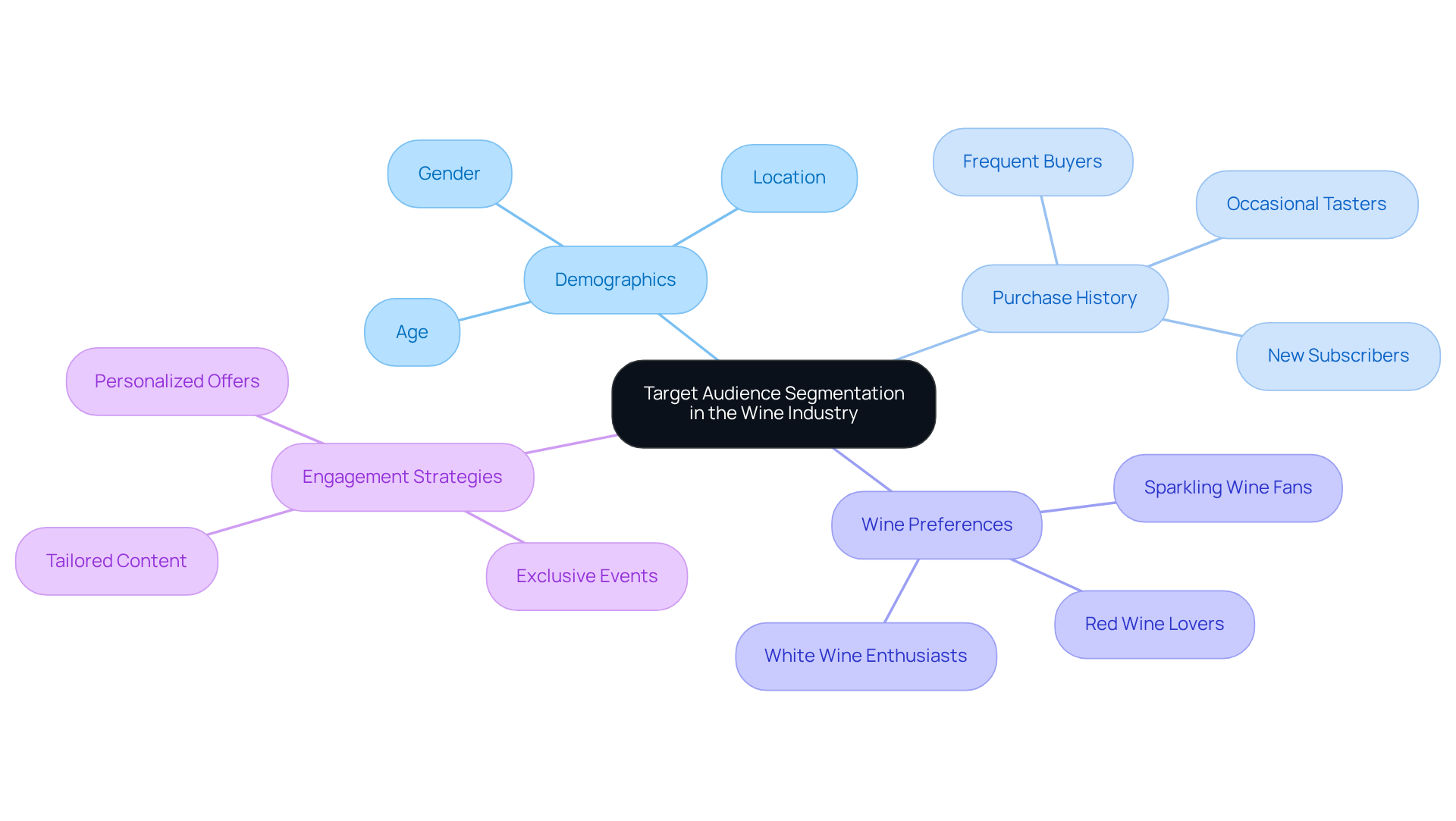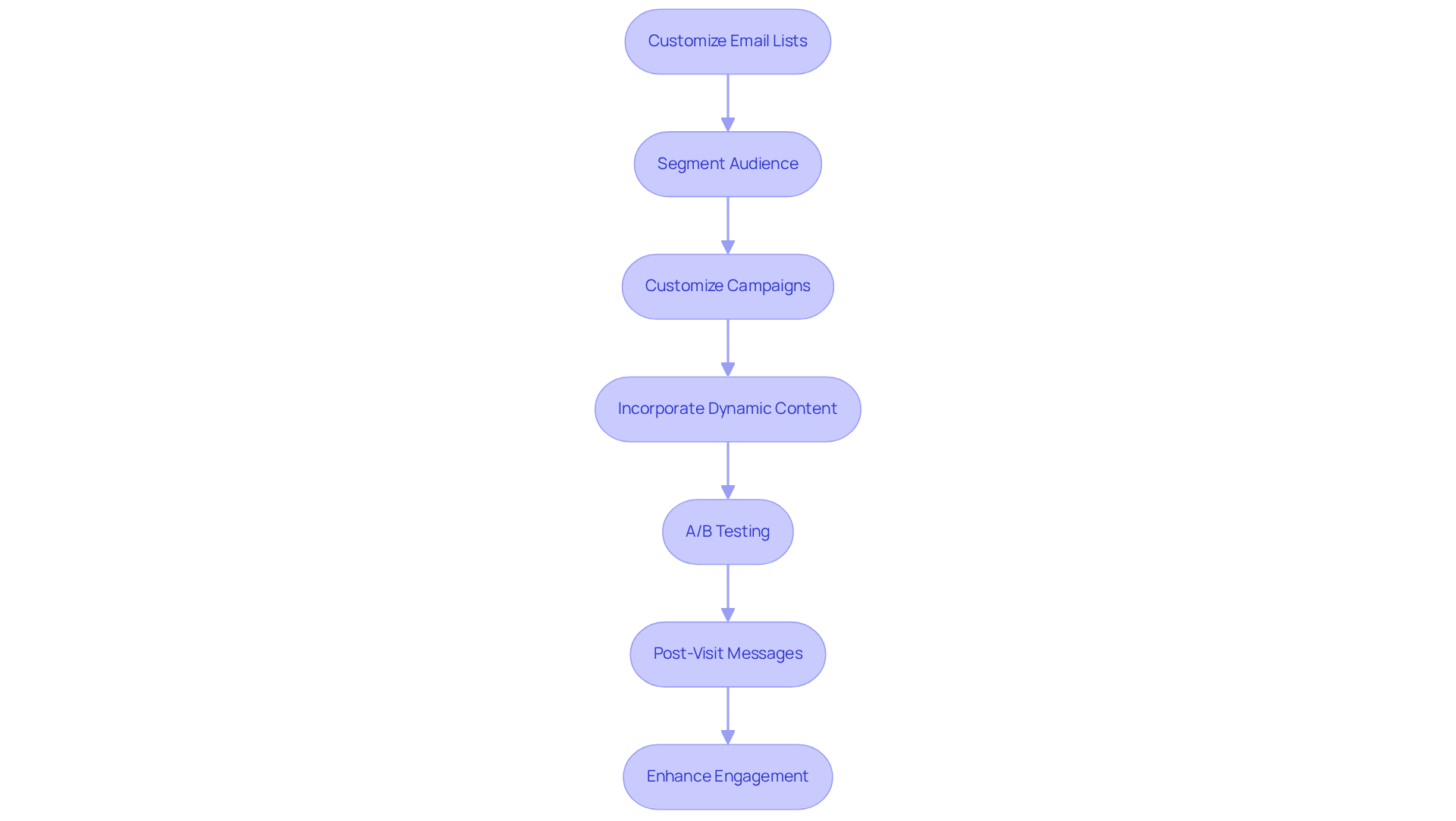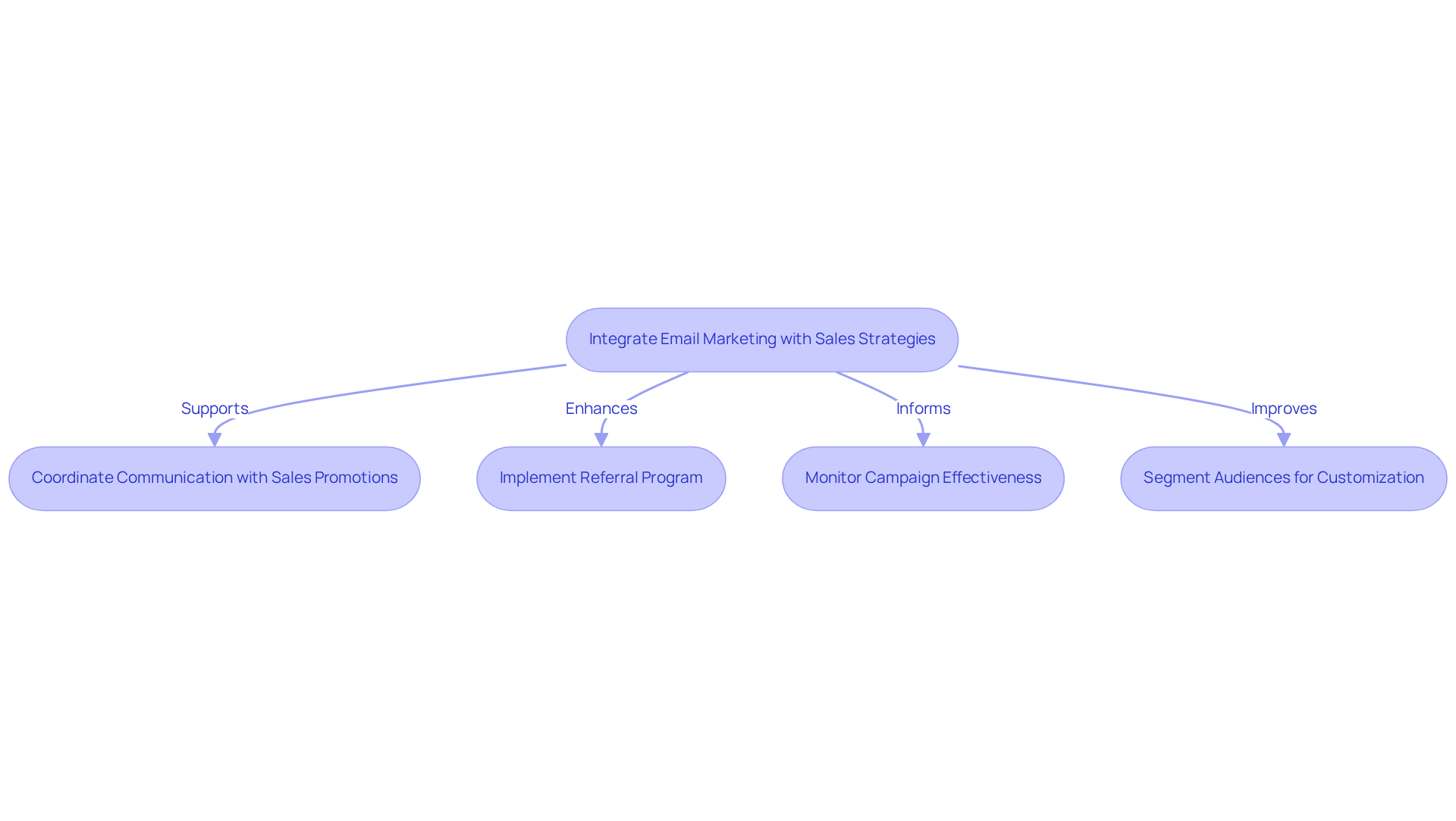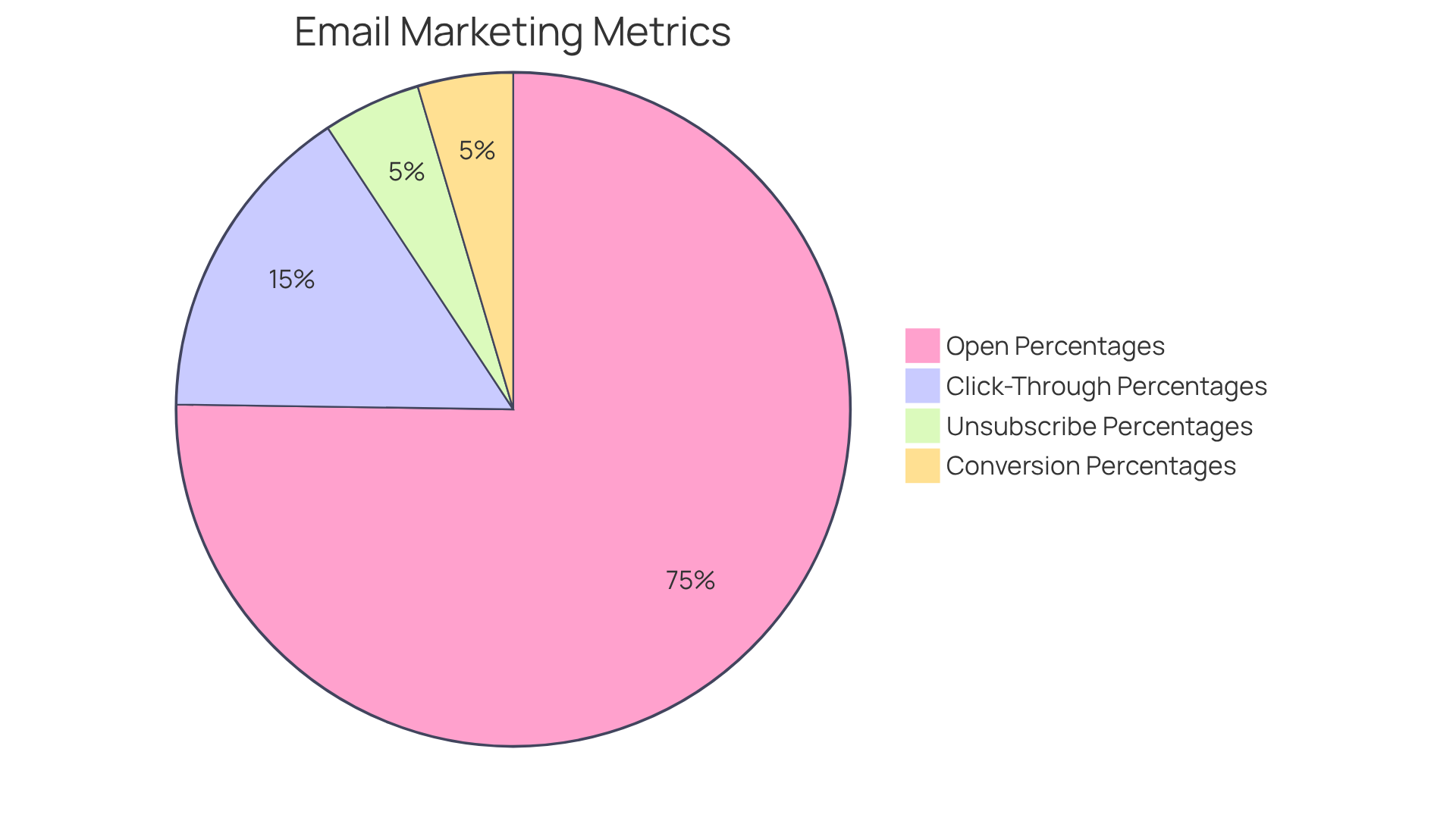Overview
This article delineates four best practices essential for effectively leveraging wine industry email lists:
- Audience segmentation
- Customization
- Integration with sales strategies
- Performance measurement
By focusing on these practices, wineries can significantly enhance engagement and revenue potential. Tailoring communications to specific customer preferences and behaviors is not merely advisable; it is imperative.
Case studies reveal substantial increases in open rates, sales, and customer acquisitions through targeted marketing efforts. These insights not only underscore the value of strategic email marketing but also prompt immediate action for those looking to elevate their outreach efforts.
Introduction
In the competitive landscape of the wine industry, effective communication is paramount; it can distinguish a casual buyer from a loyal customer. By strategically utilizing wine industry email lists, wineries can engage their audience more effectively, enhancing marketing impact through targeted messaging and segmentation.
But how can wineries ensure that their email marketing efforts translate into tangible business results? By exploring best practices for:
- Audience identification
- List customization
- Performance analysis
we uncover key strategies that unlock the full potential of email marketing in this vibrant sector.
Identify and Segment Your Target Audience Using Wine Industry Email Lists
To maximize the effectiveness of wine industry email lists, it is paramount to strategically identify and segment your audience. Consider key factors such as demographics—age, gender, and location—as well as purchase history and wine preferences. For example, a vineyard could categorize its subscribers into groups like 'frequent buyers', 'occasional tasters', and 'new subscribers'. This targeted approach empowers wineries to craft messaging that resonates with each group from their wine industry email lists, enhancing engagement and loyalty—essential for transforming casual buyers into devoted club members.
Utilizing CRM systems simplifies the , automating subscriber organization and ensuring that messages are both effective and influential. Maintaining high data quality within these systems is crucial, as the effectiveness of a CRM is directly linked to the accuracy of the data it contains. By providing customized content—such as exclusive offers or personalized wine suggestions—wineries can significantly enhance engagement levels. Studies indicate that targeted messaging efforts can achieve engagement levels 30-50% greater than non-targeted approaches, underscoring the importance of this strategy in promoting sustainable direct-to-consumer channels.
A compelling case study illustrates this point: a family-owned winery that implemented audience segmentation based on customer preferences witnessed a remarkable 40% increase in open rates and a 25% rise in sales during targeted campaigns. They accomplished this by analyzing customer data to create meaningful segments and tailoring their messaging accordingly. This example exemplifies how effective segmentation not only enhances communication but also drives tangible business results, aligning with Enocap's strategic capital advisory services that unlock growth opportunities through tailored debt, equity, and acquisition solutions. Furthermore, allowing subscribers to modify their communication preferences can further boost engagement and ensure data precision.

Customize Email Lists for Targeted Engagement and Enhanced Marketing Impact
After segmenting your audience, the next crucial step is to customize your contact lists for targeted engagement. This involves developing specific campaigns that resonate with each segment's interests and behaviors. For instance, if a group consists of clients who frequently purchase red wines, your communications should emphasize new red wine launches, suggest food pairings, or invite them to exclusive tasting events that align with their preferences, all while conveying your vineyard's unique narrative.
Incorporating dynamic content into your messages can significantly boost engagement. This content adjusts based on the recipient's profile, enabling personalized greetings, product recommendations, or special offers. A winery that embraced dynamic content saw an impressive 50% increase in click-through rates, highlighting the power of such customization in fostering emotional connections with customers.
Moreover, employing A/B testing can enhance your correspondence content even further. By experimenting with different subject lines, visuals, or calls to action, you can identify what resonates best with each group, leading to more effective initiatives. This iterative approach not only elevates engagement but also cultivates with your audience, enhancing loyalty. Additionally, consider the potential of post-visit messages, which can improve tasting room conversions by as much as 40%, providing another avenue for effective interaction and strengthening your establishment's direct-to-consumer strategies. Integrating strategic capital planning into your digital marketing can also help align your efforts with broader business objectives, ensuring sustainable growth.

Integrate Email Marketing with Sales Strategies to Maximize Revenue Potential
To maximize revenue potential, wineries must seamlessly integrate their digital marketing efforts with broader sales strategies, particularly by leveraging wine industry email lists to enhance direct-to-consumer channels. This alignment is achieved by coordinating communication strategies with sales promotions, seasonal events, or product launches. For instance, when introducing a new vintage, timing a communication campaign to coincide with the launch offers subscribers exclusive pre-order opportunities, thereby boosting engagement and promoting early sales.
Implementing a referral program using wine industry email lists can significantly enhance customer acquisition. By motivating current clients to refer friends in exchange for discounts or incentives, vineyards can efficiently broaden their customer base. A winery that adopted such a program witnessed a remarkable 30% increase in new customer acquisitions within just three months, illustrating the power of referrals in the wine industry.
Moreover, monitoring the effectiveness of communication campaigns against sales metrics for wine industry email lists is essential. Wineries should evaluate which messages yield the highest and determine revenue per message by dividing the revenue generated by the total number of messages sent. This data-driven approach guarantees that marketing efforts are not only effective but also closely aligned with sales objectives, ultimately driving sustainable growth. As Jill Barth observes, "A vineyard newsletter is an economical marketing asset that connects with an audience already showing interest in your products, like those who have visited your tasting room," highlighting the significance of targeted communication in Enocap's strategic capital planning.
Furthermore, segmenting audiences based on factors such as purchase history and geographic location can improve communication effectiveness and boost sales, offering a more customized experience for subscribers. By leveraging these strategies, family-owned wineries can transform casual buyers into loyal club members, aligning with Enocap's mission to unlock direct-to-consumer revenue and secure sustainable growth.

Measure and Analyze Campaign Performance for Continuous Improvement
To ensure ongoing enhancement in your messaging marketing efforts, measuring and analyzing campaign performance regularly is essential. Important metrics to monitor include:
- Open percentages
- Click-through percentages
- Conversion percentages
- Unsubscribe percentages
These metrics provide insights into how effectively your messages resonate with your audience. The typical open percentage in wine industry email lists hovers around 24.66%, while click-through percentages linger near 5.08%. Furthermore, the average conversion rate for wine industry email lists typically ranges from 1% to 2%. Tracking these benchmarks enables wineries to gauge their performance against industry standards, particularly when utilizing wine industry email lists.
Utilize on your campaigns. For instance, if you observe a low open percentage, consider experimenting with various subject lines or sending times. If click-through rates are low, assess the content and calls to action within your messages. A vineyard that conducted regular performance assessments experienced a notable rise in overall communication engagement, as illustrated by a case study that reported a 35% increase in interaction within six months.
Additionally, gather feedback from your subscribers through surveys or polls. Understanding their preferences and pain points can help you tailor future campaigns more effectively. As Kaitlin Stratis notes, segmenting your contacts based on their interactions with your brand is the most effective way to customize and deliver relevant content to your audience. By fostering a culture of continuous improvement and ensuring a clear call to action in your emails, wineries can adapt to changing consumer behaviors and preferences, ensuring their email marketing remains relevant and impactful.

Conclusion
Maximizing the effectiveness of wine industry email lists is crucial for driving sales and fostering loyalty. Strategic audience segmentation, targeted engagement, and continuous performance analysis are key components in this endeavor. By identifying and categorizing subscribers based on key demographics and preferences, wineries can craft personalized messaging that resonates deeply with their audience.
Best practices in the industry highlight the importance of:
- Utilizing CRM systems for data accuracy
- Customizing email content for specific segments
- Integrating email marketing with broader sales strategies
Case studies reveal the tangible benefits of these approaches, showcasing increased engagement rates and improved sales metrics. Moreover, measuring campaign performance and adapting strategies based on subscriber feedback is essential, as it leads to ongoing improvement and relevance in an ever-evolving market.
In conclusion, the wine industry stands to gain significantly from embracing these best practices in email marketing. By focusing on targeted engagement and harnessing data-driven insights, wineries can transform casual customers into devoted patrons. It is imperative for industry players to continually refine their strategies, ensuring that their email marketing efforts not only meet but exceed the expectations of their audience. This commitment unlocks sustainable growth and profitability in a competitive landscape.
Frequently Asked Questions
Why is it important to identify and segment your target audience in the wine industry?
Identifying and segmenting your target audience is crucial for maximizing the effectiveness of wine industry email lists. It allows wineries to tailor their messaging to specific groups based on demographics, purchase history, and wine preferences, enhancing engagement and loyalty.
What factors should be considered when segmenting an audience in the wine industry?
Key factors to consider include demographics (age, gender, location), purchase history, and wine preferences. This information helps categorize subscribers into groups, such as 'frequent buyers', 'occasional tasters', and 'new subscribers'.
How can CRM systems assist in the segmentation process for wine industry email lists?
CRM systems streamline the segmentation process by automating subscriber organization, which ensures that messages are effective and influential. Maintaining high data quality within these systems is essential for their effectiveness.
What impact does targeted messaging have on engagement levels?
Targeted messaging can achieve engagement levels that are 30-50% greater than non-targeted approaches, highlighting the importance of this strategy in promoting sustainable direct-to-consumer channels.
Can you provide an example of successful audience segmentation in the wine industry?
A family-owned winery that implemented audience segmentation based on customer preferences saw a 40% increase in open rates and a 25% rise in sales during targeted campaigns by analyzing customer data and tailoring their messaging accordingly.
How can wineries enhance engagement through customized content?
Wineries can enhance engagement by providing customized content, such as exclusive offers or personalized wine suggestions, which can significantly improve interaction with subscribers.
What role does allowing subscribers to modify their communication preferences play in engagement?
Allowing subscribers to modify their communication preferences can boost engagement and ensure data precision, leading to more effective marketing efforts.




